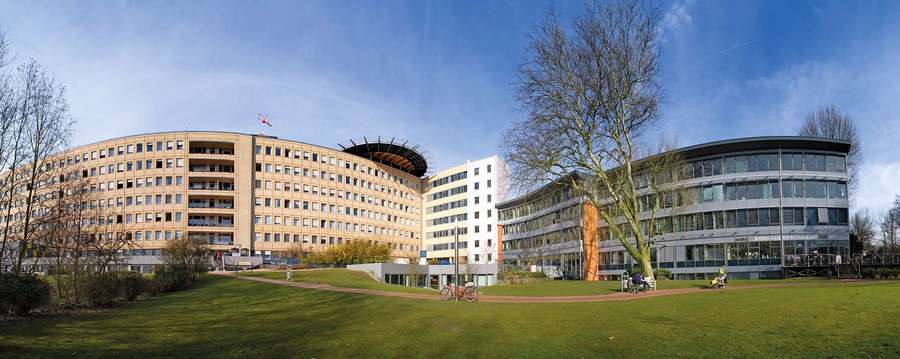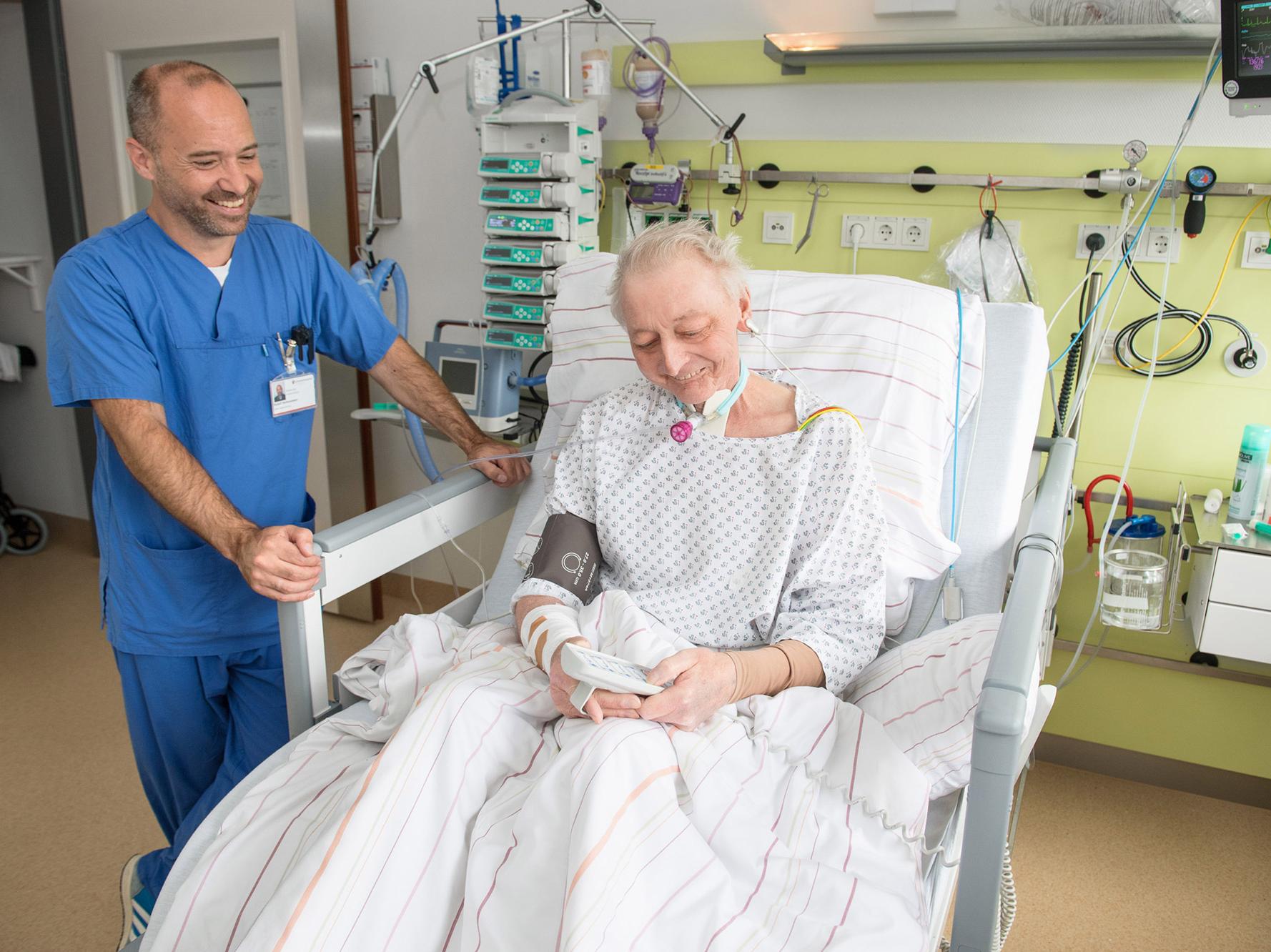
Sit upright and breathe anew
Münster’s Clemenshospital relies on the Vertica clinic mobilisation bed
The corridor of the respiratory intensive care unit welcomes visitors in a friendly, bright, sparkling clean way. Photographs of nature on the walls create a relaxing atmosphere. In the inviting ambience of the Clemenshospital in Münster, these rooms are like a special oasis of tranquillity. The beds also add to this – the Vertica clinic mobilisation bed from Stiegelmeyer supports the respiratory patients and helps them to return to everyday life.
Our unit is not just a weaning unit, but a combination of neurology and pneumology,” explains nurse manager Rudolf Noltensmeier. "That means we have doctors on the floor that know about neurology as well as about lung diseases. In Germany, this is the case only in the Clemenshospital." “We take patients from other hospitals who need to be weaned off a ventilator following an operation or pneumonia, for example. We also have patients with an underlying neurological disease whose breathing is supported by a ventilator at home. They are readjusted here, or given a new tracheal cannula for the windpipe."
Treatment by appointment
The neurological diseases concerned are ones such as muscular atrophies, where the muscles increasingly degenerate – including the respiratory muscles. These patients live with ventilator support at home or in care homes and are generally awake and focused. They need a centre for regular treatment. We are not an intensive care unit with emergency cases being wheeled in and out. We work with an appointment system – people can come, for instance, at 10 am on a Tuesday and stay for one or two nights,” explains Mr. Noltensmeier. Vertica mobilisation beds are available for all the patients. What arguments were put forward at Clemenshospital in favour of this bed, which can bring patients to a genuine sitting position and an ideal standing up position at the touch of a button?
Helpful for building up muscles
“In the weaning process, sitting and mobilising is the crucial thing,” says Rudolf Noltensmeier. That’s is the only way to restore patients’ strength. Building up muscles is important for autonomous breathing. This bed is a good help for us – its sitting function makes a big difference. Alternative makes of bed were comparatively heavy and were overequipped technically and had a less convincing price-performance ratio.” The staff in Münster were already used to operating Stiegelmeyer beds due to the Sicura pesa intensive care bed, making it even easier to get used to.
The appearance of the Vertica clinic was also convincing. “The bed is a really uncluttered version, especially as we try to tone down our unit as far as possible to avoid a typical hospital atmosphere with lots of technical gadgetry ,” says Mr. Noltensmeier. The friendly light green wall panels, the poignant photographs and the white Vertica combine to form a stylish whole that makes patients feel at home and where they can relax and regain their energy.
Which sitting position is ideal for breathing? Sitting up very straight or better half lying? It depends on the patients,” explains Mr. Noltensmeier. For example, if you sit well-built patients up too straight, the abdomen presses on the lungs and makes breathing more difficult. Nevertheless, the sitting function is in principle ideal for breathing, for patients’ awareness of breathing and for strengthening patients’ muscles. And above all for mealtimes. Our patients have dysphagia, so they have difficulty swallowing. They would find it very difficult to eat lying down. There is a danger that the food could go down the wrong way, the patients could get pneumonia and have to begin the treatment all over again. A lot of things are much easier sitting up, including the speech therapy that many patients receive here."
Supraregional interest
The good reputation of the new unit quickly spread across the whole of Germany. “A patient from the Aachen area spent four hours getting here with an intensive care transport service, stayed here a few days for treatment and then spent another four hours getting home,” says Herr Noltensmeier. "You can see how the patients are making progress and can return home in a much better state."
A few rooms further on, Helmut Sackarend is sitting in his Vertica clinic, listening to the radio and looking at the visitors with bright, alert eyes. The elderly gentleman has been treated in the unit for a while: "I've been lying in this bed for three months," he says, "I feel comfortable in it. Mr. Noltensmeier praises the good progress his patient is making: With the help of an attachment to the tracheal cannula, Mr. Sackarend is able to talk again; he already spends a lot of time without a ventilator and hopefully will be able to do without a ventilator completely in the near future. The raised bed in the sitting position brings Mr. Sackarend up to eye level with visitors, and he can participate actively in everyday life.
Staff wanted
The unit with eight beds was only opened in January, but a move is already being planned. The Clemenshospital is investing 50 million euros in a new hospital site with an underground car park, which is planned to be completed by 2020. Despite the modern environment in the unit and the attractive city of Münster, it is difficult to find enough staff for such a specialist department. Rudolf Noltensmeier is convinced, however, that his unit has a lot to offer its staff. He is looking forward to receiving enquiries from the general health and nursing care sector, as well as from the intensive care and elderly care sector.
Detailed information is available on the Internet at:
www.weaning-muenster.de






